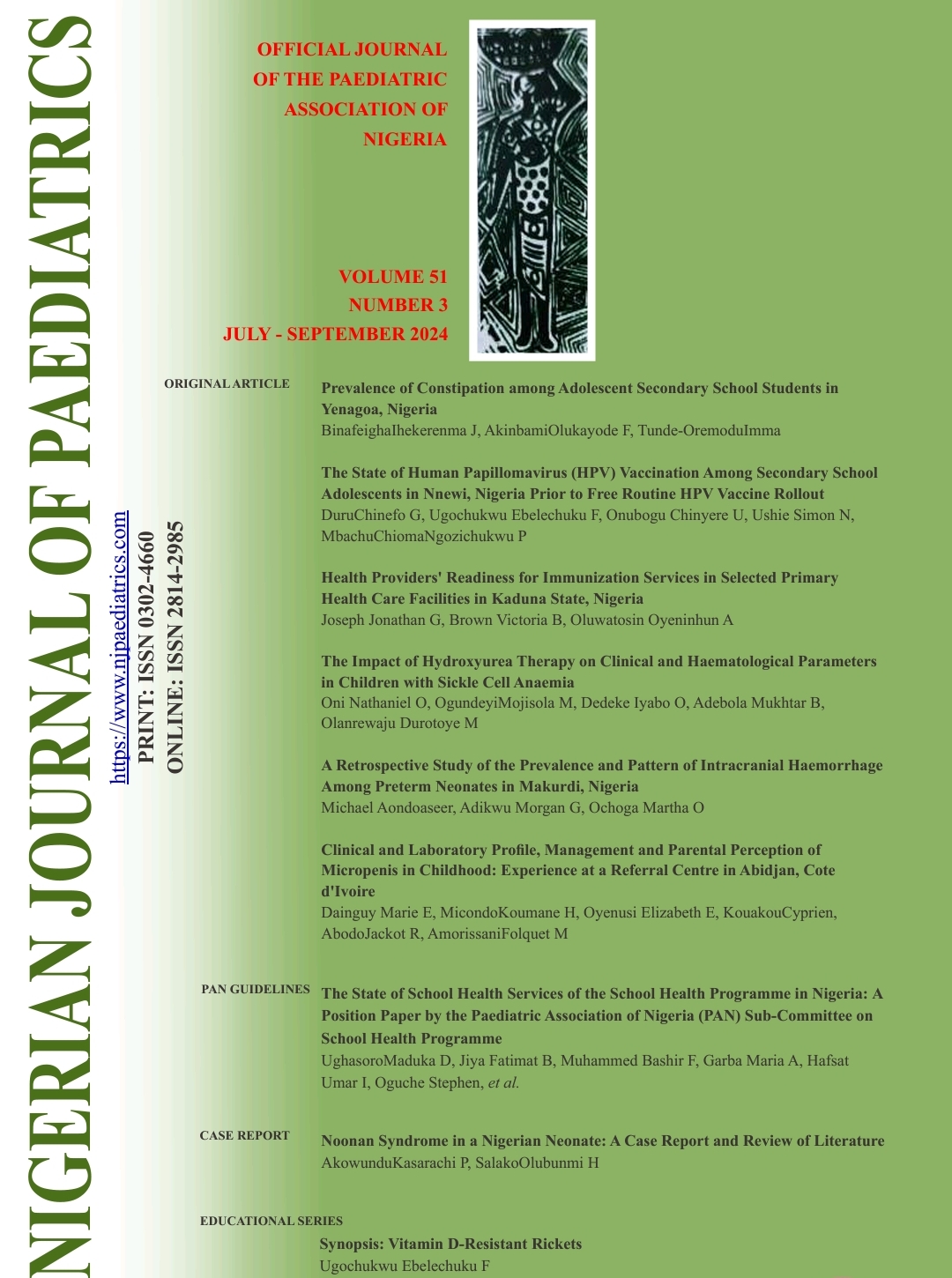Clinical and Laboratory Profile, Parental Perception and Management of Micropenis in Childhood: Experience at a Referral Centre in Abidjan, Cote d'Ivoire
Abstract
Background: Micropenis is a congenital condition that is part of the group of disorders of sex differentiation (DSD). It is a condition that has not received much attention among children in our environment.
Objective: To describe the epidemiological, clinical profile, and therapeutic profile of children with micropenis and the management outcome.
Methods: This was a descriptive, retrospective study of children with micropenis at the Paediatric unit of the Military Hospital, Abidjan, over six years (May 2016 to June 2022).
Results: A total of 70 children with micropenis were studied. The mean age was 9.3±3.9 years (1 month to 15 years). About one-third (30%) of the children were obese. The mean penile length was 2.55 ±0.65 cm (1 cm to 4 cm). In more than three-quarters of the cases, the mothers discovered a small-sized penis and anxiety in 91.4% of the parents. In the majority of cases (62.9%), the aetiology was unknown, while primary and central hypogonadism were observed in 24.3% and 11.4%, respectively. Affected children received testosterone treatment with favourable outcomes in all cases. The mean increase in penile length was 2.68 cm ± 0.97 (minimum of +1 cm and maximum of 6 cm).
Conclusion: It is essential to raise awareness about micropenis among the population and health personnel to reduce undue anxiety in parents and children.
Downloads
Published
Data Availability Statement
Available
Issue
Section
License
Copyright (c) 2024 NIGERIAN JOURNAL OF PAEDIATRICS

This work is licensed under a Creative Commons Attribution 4.0 International License.
This is an open-access journal, and articles are distributed under the terms of the Creative Commons Attribution 4.0 License, which allows others to remix, transform, and build upon the work even, commercially, as long as appropriate credit is given to the author, and the new creations are licensed under identical terms

